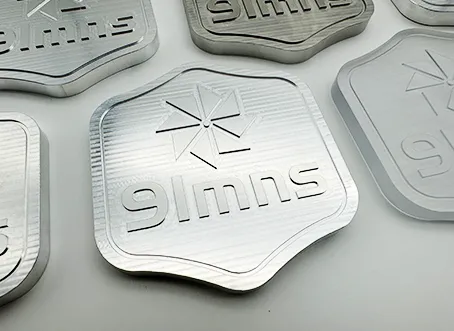Our vision is to simplify manufacturing complexities and shorten project cycles for our customers through our rich manufacturing and design experience. Our success is defined by our customers' success
Quick Links
What is Die Casting?
Die casting is a metal casting process that is characterized by forcing molten metal under high pressure into a mold cavity. The mold cavity is created using two hardened tool steel dies which have been machined into shape and work similarly to an injection mold during the process. Most die castings are made from non-ferrous metals, specifically zinc, copper, aluminium, magnesium, lead, pewter, and tin-based alloys. Depending on the type of metal being cast, a hot- or cold-chamber machine is used.
Advantages of Die Casting
High Precision: Capable of producing complex parts with accurate dimensions.
Excellent Surface Finish: Parts have a smooth surface, often requiring no additional machining.
Fast Production: Ideal for high-volume manufacturing with quick turnaround times.
Material Efficiency: Reduces waste and maximizes material usage.
Durability: Cast parts typically have good strength and corrosion resistance.
Design Flexibility: Allows for intricate shapes and detailed designs.
Materials
Die Casting Materials

Aluminum Die Casting
Lightweight and strong, aluminum is ideal for automotive and aerospace parts requiring durability and minimal weight.
Type: Aluminum ADC12、ADC6、A360、A380
See All

Magnesium Die Casting
The lightest structural metal, magnesium offers an excellent stiffness-to-weight ratio, ideal for weight-sensitive applications.
Type: Magnesium AZ91D, AM60B
See All

Zinc Die Casting
Known for its toughness, zinc enables precise, high-tolerance casting for intricate designs and durable components.
Type: Zinc Zamak 3, Zamak 5, Zamak 2, ZA8
See All

Copper Die Casting
Copper is excellent for parts such as heat sinks and electrical connectors because it conducts heat and electricity very effectively.
Type: Copper ZQA19-2, ZQA19-4, ZQA19-7, ZQA19-10
See All
Die Casting Tolerance
| With Drawing | Without Drawing | |
| Linear Dimension | +/- 0.01 mm | ISO 8062 |
| +/- 0.003 inch | ||
| Hole Diameters | +/- 0.008 mm | ISO 8062 |
| +/- 0.0003 inch | ||
| Angular | +/- 0.01 degree | ISO 8062 |
Why choose 91mns tech for Die casting Fabrication?
Wide range of choose of material diverse machining techniques.
Fast processing speeds.
Experienced team of engineers.
Competitive pricing.
Consistent quality ensured by advanced Zeiss CMM equipment.
Worldwide shipping guarantee.
Die Casting FAQs
Q What materials are commonly used in die casting?
Common materials include aluminum, zinc, magnesium, and copper alloys, each chosen for their specific properties and applications.
Q What is the typical lead time for die casting projects?
Lead times vary based on complexity and volume, but initial prototypes can often be produced within a few weeks, while production runs may take longer.
Q How does the die casting process work?
The process involves melting metal, injecting it into a mold under high pressure, cooling it, and then ejecting the finished part from the mold.
Q What are the benefits of using die casting?
Die casting offers high precision, excellent surface finish, fast production rates, and material efficiency, making it ideal for large-scale manufacturing.
Q What types of parts can be produced with die casting?
Die casting is used for a wide range of applications, including automotive components, electronic housings, and various industrial parts.
Q Are there any limitations to die casting?
Yes, die casting may not be suitable for very large parts, and the initial cost of mold creation can be high, making it less economical for low-volume production.

Talk to Us About Your New Project!
Get a Quote